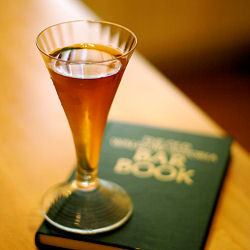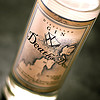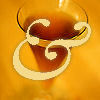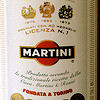DOTW: Ampersand
 A few months ago, the New Yorker ran a ‘briefly noted’ blurb about Michael Lerner’s book Dry Manhattan: Prohibition in New York City. The review’s blasé tone must have dissuaded me from rushing out to buy a copy; instead, I patiently waited months for my chance to read our library’s single circulating print.
A few months ago, the New Yorker ran a ‘briefly noted’ blurb about Michael Lerner’s book Dry Manhattan: Prohibition in New York City. The review’s blasé tone must have dissuaded me from rushing out to buy a copy; instead, I patiently waited months for my chance to read our library’s single circulating print.
Had I known what a compelling read Dry Manhattan would be, I probably would have spent 20 bucks for the luxury of getting my hands on it sooner. True, it’s a bit scholarly, weighed down with inconvenient end-notes and a tendency toward expository repetition. But I can forgive the academic author’s shortcomings, given how entertaining the final story becomes, even when you know the ending.
Despite his geographic focus on New York City, Lerner illuminates the entire era by throwing a cosmopolitan light on the social changes that led both to Prohibition and its eventual Repeal. Although the book steers clear of drawing any overt parallels to current politics, readers who possess even a passing familiarity with modern-day prohibition movements — foie gras bans and the war on medical cannabis come to mind — will recognize plenty of eerie echoes from 80 years past. The story here makes a stark reminder of how a vocal, conservative, puritan minority swept away the freedoms of an entire country as their city-dwelling counterparts complacently boasted “it can never happen here”. Until it did… and it stayed that way for 13 long, dry years.
Honestly, it’s enough to send you straight to the bar in search of a sedative.
Perusing my library for appropriate Prohibition-era cocktails to salve my nerves, I stumbled upon a drink called the Ampersand in the Old Waldorf-Astoria Bar Book. How could I help but love a drink named after my favorite typographical glyph? (I suppose I just outed myself as a font geek. So be it.) Plus, it just sounds like a winner: Gin, brandy, sweet vermouth, plus a pair of orange-scented grace notes… What’s not to like?
But why “Ampersand”?
Although the compendium is rife with anecdotes — no great surprise, given that it was laid down by the hotel’s official historian — the origins of this particular drink’s name are lost to the mists of time. It’s possible that the typographical moniker’s a nod to Martini & Rossi, the still-popular Italian sweet vermouth, and one of the drink’s key ingredients.
Whatever the namer’s original intent, it seems particularly appropriate as cocktail bloggers around the world are celebrating both this month’s Mixology Monday & this year’s Repeal Day festivities next week. Wednesday evening, be sure to raise a glass of your favorite beverage in honor of those who fought the good fight in the 1930s, restoring the pursuit of mixological happiness to us all.
Ampersand
1 oz Old Tom gin (see note)
1 oz brandy
1 oz Italian sweet vermouth
2 dashes orange bitters
orange curaçao, to finish
In an ice-filled mixing glass, stir the gin, brandy, vermouth, and bitters until very cold. Strain into a chilled cocktail glass, then add two drops of curaçao.
Note: Old Tom was a sweetened gin of yore, a popular ingredient in many pre-Prohibition cocktail recipes. Although there are no ready sources for such a beast, fruit-derived gins such as G’vine are not bad stand-ins. Alternately, David Wondrich recommends slightly sweetened Plymouth or Junipero as acceptable substitutes; a drop or two of simple syrup seemed to do the trick in the Ampersand samples we tried. Given its lore, I suspect the original Old Tom gins were a fair deal harsher than anything on the shelves today, but we’re going for delicious approximations here, rather than slavish authenticity.
My neighbor Erik (proprietor of Underhill Lounge) was kind enough to let us sample from his personal stash of Death’s Door gin, a product that may be the closest modern Old Tom equivalent. Its flavor is noticeably sweet, a trait that the distillers assured Eric was intended rather than accidental. Alas, it’s not widely available outside the upper Midwest, but we didn’t find a drastic difference in mixed drinks made with Death’s Door compared with those made from sweetened dry gins.









Comment by Andrew
Another excellent photo – just love that glass!
Posted on 11.30.07 at 8:55AM
Comment by Jay Hepburn
Have to agree about the glass (and indeed the photo)… it’s absolutely beautiful! Where you say two drops of curaçao, was that measured in any way?
Posted on 11.30.07 at 9:11AM
Comment by Anita
Thanks, guys. I must’ve taken 50 shots of that drink that all looked mediocre at best. I walked out of the room to get a different lens, and when I walked back in a different door, I saw the shot from a totally different — and much improved — angle. Sometimes it’s just luck.
The glass is from Crate & Barrel (alas, no UK locations) — it’s called the Kir Cocktail Glass:
http://www.crateandbarrel.com/family.aspx?c=140&f=23029
For the curacao, I poured a small bit into a bar spoon and let drops fall off the side. It was probably no more than 1/8 tsp all told.
Posted on 11.30.07 at 9:23AM
Comment by hannehanne
I laughed out loud when you said why you needed to try this drink. I clicked over to you from Tastespotting for precisely the same reason. How could I resist an ampersand?
Posted on 11.30.07 at 10:19AM
Comment by The Name Game: & « In Praise of Sardines
[…] However, I can’t claim credit for this one. I was inspired by today’s post on Married with Dinner. What would be more fitting for a food blogger opening a restaurant to find inspiration in another food blog? Plus, I’d already have a signature drink (if I can get approval for a full liquor license, that is). […]
Posted on 11.30.07 at 2:52PM
Comment by Dinah
Mmmm, typography.
And glassware. And old books. And old drinks.
Ah! And Old Tom! Which I enjoyed a recreation of in a Martinez at the Bar at the Dorchester Hotel in Mayfair on my recent trip to London. Now I really want to get my hands on a bottle of that stuff…
Posted on 11.30.07 at 10:09PM
Comment by jen maiser
I knew you were a font geek the day (recently) that I read that your dingbats were from an Emigre font. Doesn’t get much geekier (and cool) than that. 😉
Posted on 12.02.07 at 7:10PM
Pingback by Jeffrey Morgenthaler » Mixology Monday: Prohibition
[…] Getting an early jump on the competition was Anita at Married… with Dinner. On Friday, she posted a delightful concoction from the Old Waldorf-Astoria Bar Book called the Ampersand. […]
Posted on 12.03.07 at 2:29PM
Comment by sam
did YOU put the idea in Brett’s head?
Posted on 12.05.07 at 12:32PM
Comment by Anita
Hanne: So glad I am not the only ampersand lover out there. 🙂
Dinah: When you find Old Tom, let me know!
Jen: That means a lot coming from you. (Now, did I mean she’s a geek or she’s cool? Hmmm..)
Sam: Inadvertently, yes. He read this post and got a bee in his bonnet. 🙂
Posted on 12.05.07 at 12:35PM
Comment by Brian
Thanks to Erik for giving you a turn with the Death’s Door Gin. Quite a few places here in Madison and Chicago are picking up the Gin for Pre-Prohibition cocktails. I would love to include your recipe, and beautiful photo in the DD website recipe page…may we? http://deathsdoorspirits.com/recipes.php
And yes, the blend of all-Wisconsin botanicals (only three- can you guess them?) is intended to create a slightly sweet, simple gin that plays well with others.
Best,
Brian
Death’s Door Spirits
Madison, WI
PS- I will be in the Bay Area in February- let me know if I need to bring some care packages…:-)
Posted on 12.07.07 at 7:43PM
Comment by Rick
I’m enjoying my first ampersand and was cruising around to see if it had been posted about, and I was met with a beautiful photo and good tale.
Did you try it without adding any simple syrup? It’s a touch dry, but I think that’s more of a compliment to the drink than anything.
Looks like you took the shot near a daylight window?
Posted on 01.02.08 at 4:12PM
Comment by Anita
Hey Rick: We actually didn’t add any syrup; we made ours with a lightly (and I do mean lightly) sweet gin from Death’s Door. I haven’t tried it yet with a more-traditional dry gin… that’s the trouble with coming up with a new drink every week — it rarely leaves much time for experimentation with the old ones.
Posted on 01.02.08 at 9:06PM
Comment by Stevi Deter
I just made this using Hayman’s, Salignac cognac, and Martini & Rossi, and something just not quite balanced. I think it’s the brandy.
Posted on 12.07.08 at 10:08PM
Comment by Frederic
The Ampersand made one month’s drink special at Eastern Standard last year for the 12 months leading up to their Prohibition Repeal Party. Quite tasty. A similar drink from that era would be the Automobile which uses blended Scotch instead of brandy (well, dry gin instead of Old Tom, and no curacao).
One day I’ll get through my stack of to-read books and get to my copy of Dry Manhattan.
Posted on 02.15.09 at 8:40AM